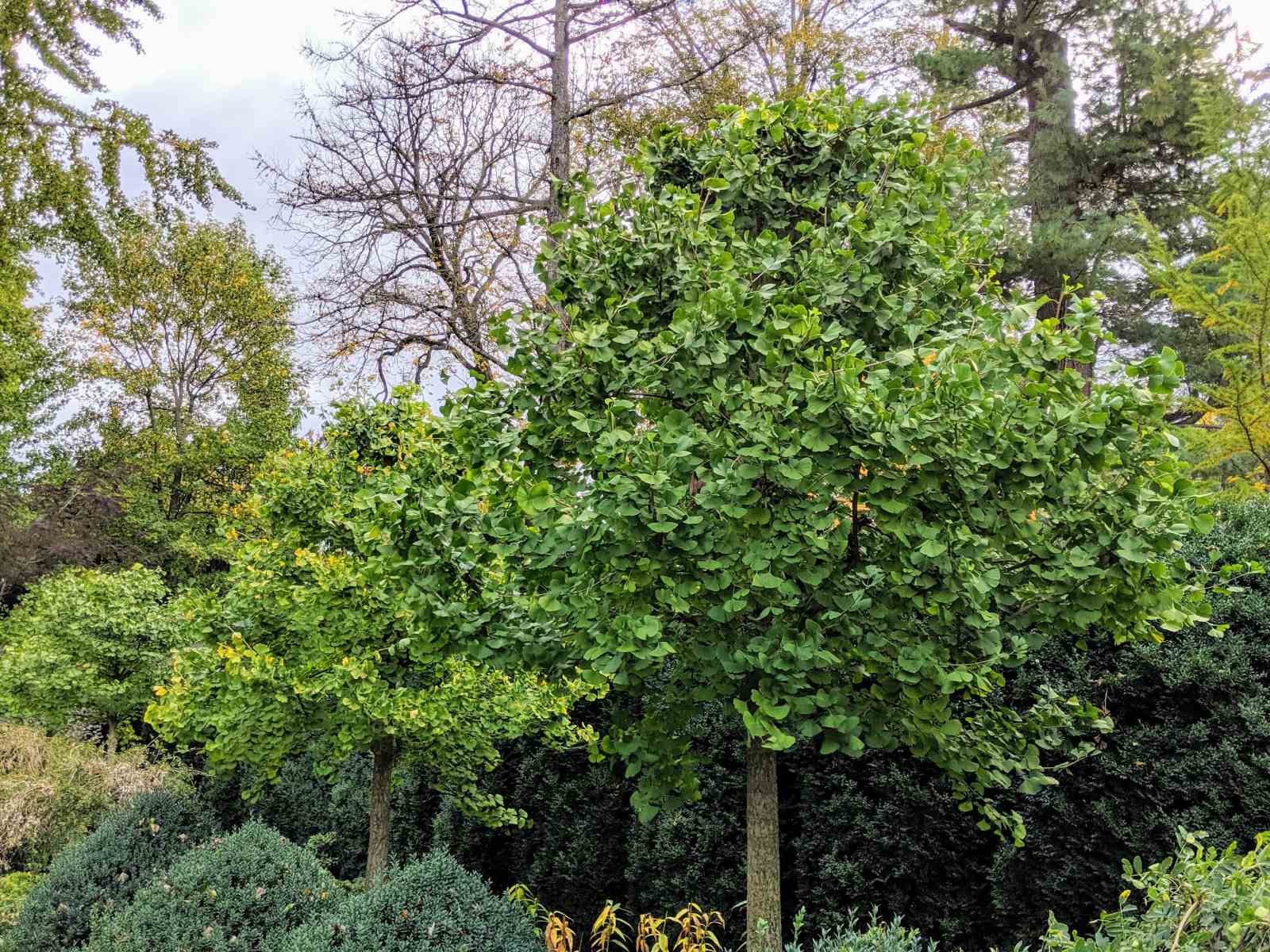
Ever wondered about the secrets behind one of Earth's oldest living tree species? Ginkgo trees, with their unique fan-shaped leaves, hold stories spanning over 250 million years. Why do these ancient beings fascinate scientists and garden enthusiasts alike? From their incredible resilience to their mysterious reproductive process, ginkgo trees are a living link to the past. In this article, we'll uncover 30 astonishing facts about these majestic trees. Prepare to be amazed by their survival skills, historical significance, and the unexpected ways they touch our lives today. Ready to journey through time with these remarkable survivors? Let's dive into the world of ginkgo trees and discover what makes them truly extraordinary.
What Is a Ginkgo Tree?
Ginkgo trees, scientifically known as Ginkgo biloba, are among the oldest living tree species, with a history that dates back over 250 million years. These trees are not only revered for their beauty and uniqueness but also for their resilience and adaptability. Originating from China, ginkgo trees have spread across the globe, thriving in various climates and urban environments.
- Ginkgo biloba is the only surviving species in the division Ginkgophyta, all others being extinct.
- These trees can live for more than 1,000 years, with some specimens in China believed to be over 2,500 years old.
- Ginkgo leaves are distinctive, fan-shaped, and turn a bright yellow color in the fall.
Why Are Ginkgo Trees Special?
Ginkgo trees hold a special place in both the natural world and human culture. They are often planted in cities for their tolerance to pollution and their unmatched beauty. Moreover, ginkgo trees have various uses in traditional medicine and are a symbol of resilience and peace.
- Ginkgo trees are known for their ability to withstand urban pollution, making them popular in cities.
- The seeds and leaves of the ginkgo tree have been used in traditional Chinese medicine for thousands of years.
- In Japan, ginkgo trees are often found near temples and are considered symbols of endurance and vitality.
The Unique Characteristics of Ginkgo Trees
Ginkgo trees are not only ancient but also possess unique characteristics that set them apart from other tree species. Their resilience to disease and environmental stressors is remarkable.
- Unlike most trees, ginkgos are dioecious, meaning they have separate male and female trees.
- The female ginkgo tree produces a fruit-like seed that has a rather unpleasant smell when it falls and decays.
- Ginkgo trees are highly resistant to pests and diseases, contributing to their long lifespan.
Ginkgo Trees in Urban Landscapes
In urban environments, ginkgo trees serve not just as beautiful additions to the landscape but also as natural air purifiers. Their ability to thrive in harsh conditions makes them ideal for city planting.
- Many cities around the world plant male ginkgo trees to avoid the smelly seeds produced by females.
- Ginkgo trees can tolerate a wide range of soil types, air quality, and temperature variations.
- Their deep root systems help prevent soil erosion in urban areas.
Ginkgo Trees and Biodiversity
Despite being a single species, ginkgo trees contribute significantly to biodiversity. They provide habitat and food for various bird species and insects, especially when other food sources are scarce.
- Birds are attracted to ginkgo seeds, despite their smell, and play a crucial role in seed dispersal.
- The unique leaf shape of the ginkgo provides a habitat for specific types of insects and fungi.
Ginkgo Trees and Climate Change
Ginkgo trees are not only survivors of the past but also warriors in the fight against climate change. Their ability to absorb carbon dioxide and release oxygen makes them valuable assets in urban and rural settings.
- Ginkgo trees can absorb significant amounts of carbon dioxide, helping to mitigate the effects of climate change.
- Planting ginkgo trees in urban areas can contribute to lowering city temperatures and improving air quality.
The Cultural Significance of Ginkgo Trees
Ginkgo trees have been revered in art, literature, and religion. They symbolize hope, peace, and longevity, transcending cultural boundaries and inspiring people around the world.
- The ginkgo leaf has appeared in various artworks and poems throughout history, symbolizing beauty and resilience.
- In many cultures, ginkgo trees are planted as living memorials to honor historical events and figures.
Ginkgo Trees in Medicine and Nutrition
The nutritional and medicinal benefits of ginkgo are well-documented. Ginkgo supplements are widely used for their potential health benefits, including improving memory and blood circulation.
- Ginkgo biloba extracts are among the top-selling herbal supplements globally.
- Studies suggest that ginkgo can improve cognitive function and memory in older adults.
- The antioxidants found in ginkgo leaves are believed to help combat inflammation and support heart health.
How to Care for Ginkgo Trees
Caring for ginkgo trees is relatively straightforward, thanks to their hardiness. However, understanding their needs can ensure they thrive and live to their full potential.
- Ginkgo trees prefer sunny locations with well-drained soil.
- Young ginkgo trees require regular watering until they are established, but mature trees are drought tolerant.
- Pruning is rarely needed for ginkgo trees, as they naturally maintain a strong, attractive shape.
The Future of Ginkgo Trees
As the world changes, so too does the role of ginkgo trees in our environment and culture. Their continued planting and preservation are vital for future generations to enjoy and learn from.
- Conservation efforts are underway to ensure ginkgo trees remain a part of our natural and urban landscapes.
- With climate change posing a threat to biodiversity, ginkgo trees' resilience could offer lessons in adaptation and survival.
- Research into the genetic makeup of ginkgo trees is helping scientists understand more about plant resilience and longevity.
- As symbols of peace, planting ginkgo trees can serve as a reminder of our commitment to environmental stewardship and harmony.
- Educational programs are introducing young people to the importance of ginkgo trees and their role in ecological balance.
- The ongoing fascination with ginkgo trees ensures they will continue to be planted and cherished, linking past, present, and future generations in a chain of natural beauty and resilience.
A Glimpse into Ginkgo's Marvels
Ginkgo trees, with their unique fan-shaped leaves and remarkable resilience, have stood the test of time, offering a living link to the ancient world. These trees aren't just a testament to survival; they're a source of beauty and utility in urban landscapes and medicine cabinets alike. From their ability to thrive in challenging environments to their role in traditional medicine, ginkgo trees encapsulate nature's incredible adaptability and generosity. Whether you're marveling at their golden fall foliage or benefiting from their health-promoting extracts, ginkgo trees continue to fascinate and benefit humanity in countless ways. Their story is a reminder of the enduring connection between people and the natural world, encouraging us to appreciate and preserve the remarkable biodiversity our planet has to offer.
Was this page helpful?
Our commitment to delivering trustworthy and engaging content is at the heart of what we do. Each fact on our site is contributed by real users like you, bringing a wealth of diverse insights and information. To ensure the highest standards of accuracy and reliability, our dedicated editors meticulously review each submission. This process guarantees that the facts we share are not only fascinating but also credible. Trust in our commitment to quality and authenticity as you explore and learn with us.


